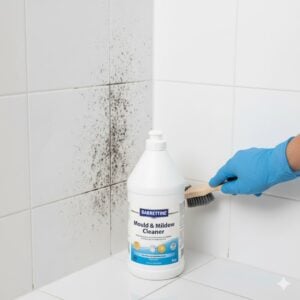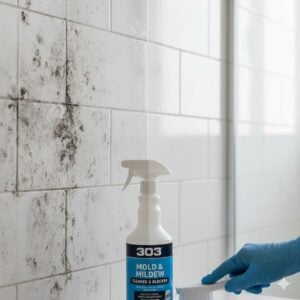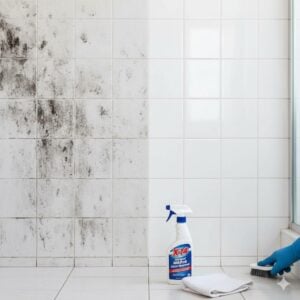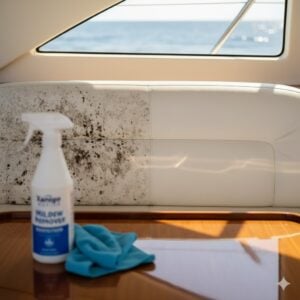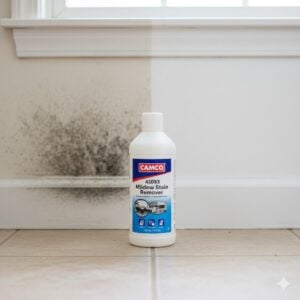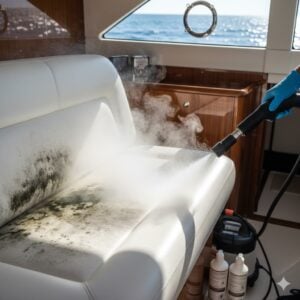Hello and welcome to our latest blog post on Mold Formation: 5 Top Home Control Tips At Bio On, we understand how crucial it is to maintain a healthy and safe environment in your home. Mold formation is not just a common household issue but a significant health concern that can affect your living space’s air quality. That’s why discussing effective strategies to control and prevent mold growth is essential. In this article, we’ll share with you five expert tips that can help keep your home mold-free. Join us as we explore these proven techniques, ensuring your living space remains healthy, clean, and comfortable.
Table of Contents
Toggle#1. Proper Ventilation

Ventilation plays a critical role in preventing mold formation in homes. Mold thrives in stagnant air environments where moisture levels are high. Therefore, ensuring proper airflow can significantly reduce the potential for mold growth by removing excess moisture and providing a less hospitable environment for mold spores to settle and multiply.
One effective strategy for enhancing ventilation is to use exhaust fans, especially in areas prone to high humidity, such as kitchens, bathrooms, and laundry rooms. Exhaust fans work by expelling moist air outside, helping to maintain a dry and mold-resistant indoor atmosphere. For optimal effectiveness, it’s crucial to regularly clean these fans to ensure they function efficiently and to keep them running for at least 15 to 20 minutes after activities that produce a lot of moisture, like cooking or taking showers.
Another key aspect of improving home ventilation is to open windows whenever possible. This allows for cross-ventilation, where fresh air enters from one side of the house and pushes out stale, moist air from the other side. However, this strategy is weather-dependent and may not be suitable in extremely humid or polluted external environments. In such cases, mechanical ventilation systems, which can filter and introduce fresh air while expelling stale air, become an invaluable tool in maintaining optimal indoor air quality.
It’s also beneficial to incorporate plants that absorb humidity, such as peace lilies or Boston ferns, into your home decor. These natural dehumidifiers can assist in reducing indoor moisture levels, though they should not be solely relied upon for mold prevention.
For homes in particularly humid climates or those without adequate natural ventilation, investing in a whole-house ventilation system might be necessary. These systems are designed to provide a controlled method of ventilating the entire house, reducing humidity levels uniformly and preventing mold growth. There are several types of systems available, including energy recovery ventilators (ERVs) and heat recovery ventilators (HRVs), which not only help in controlling moisture but also conserve energy.
Ensuring that your home’s structure is ventilated correctly is also crucial. This includes having proper venting in attics and crawl spaces to prevent moisture accumulation that can lead to mold growth. For attics, ridge vents or soffit vents can provide the necessary airflow to keep the area dry. In crawl spaces, vent screens can help to keep moisture out while allowing air to circulate, preventing the damp conditions that mold spores thrive in.
In summary, enhancing your home’s ventilation is a multifaceted approach involving the use of exhaust fans, opening windows, considering the addition of indoor plants, investing in whole-house ventilation systems, and ensuring proper structural ventilation. These strategies collectively create an environment that is less conducive to mold growth by reducing indoor humidity and improving air quality.
Caption for Illustration: “Diagram illustrating optimal home ventilation strategies, including placement of exhaust fans, window opening for cross-ventilation, and the use of indoor plants for humidity control.”
#2. Humidity Control
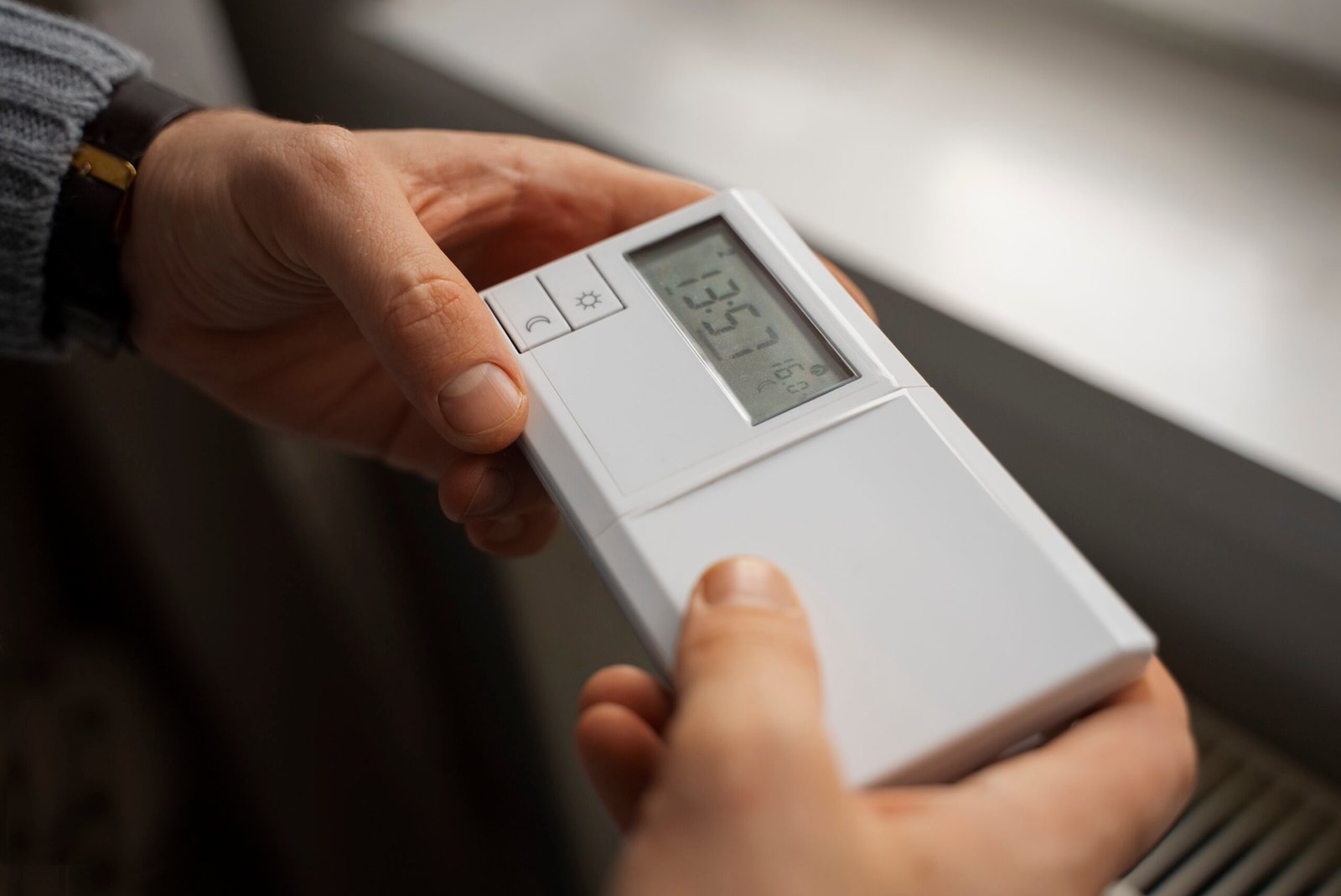
Humidity plays a pivotal role in the formation of mold in homes. Mold spores thrive in moist environments, making humidity control essential in preventing their growth and proliferation. Understanding and managing the levels of moisture in your home can significantly reduce the risk of mold formation, ensuring a healthier living environment. This segment explores practical strategies for maintaining optimal humidity levels to combat mold growth effectively.
First and foremost, it’s crucial to understand the relationship between humidity and mold growth. Mold spores can begin to grow into colonies when exposed to relative humidity levels of 60% or higher for prolonged periods. Therefore, maintaining indoor humidity levels between 30% and 50% is recommended to prevent mold formation. This range is conducive to human comfort while being inhospitable to most mold species.
To achieve this, using dehumidifiers in particularly damp areas of your home, such as basements, bathrooms, and kitchens, can be highly effective. Dehumidifiers work by extracting excess moisture from the air, helping to maintain a dry and mold-unfriendly environment. For best results, choose a dehumidifier with a capacity appropriate for the size of the space and the level of humidity.
Another effective strategy is to ensure proper ventilation, especially in areas where moisture is commonly produced, such as bathrooms, kitchens, and laundry rooms. Use exhaust fans to vent moisture-laden air directly outside, preventing it from circulating throughout your home. Additionally, opening windows when the weather permits can help reduce indoor humidity levels by allowing fresh, dry air to circulate and dilute moist indoor air.
Monitoring your home’s humidity levels can also play a crucial role in mold prevention. Hygrometers, affordable and widely available devices, can measure indoor humidity levels accurately. Regularly checking humidity levels can help you identify potential problem areas before mold has a chance to grow. It’s a proactive measure that can make a significant difference in maintaining a healthy indoor environment.
Addressing sources of moisture intrusion is also critical in controlling indoor humidity. Leaks from the roof, walls, or plumbing can introduce excessive moisture into your home, creating ideal conditions for mold growth. Regularly inspecting your home for signs of leaks and repairing any issues promptly can prevent moisture accumulation and the subsequent risk of mold formation.
Lastly, incorporating moisture-resistant building materials during renovations or repairs can provide long-term solutions to humidity control. Materials such as moisture-resistant drywall, especially in high-humidity areas like bathrooms and kitchens, can significantly reduce the risk of mold growth by preventing moisture absorption.
Caption for Illustration: “Diagram illustrating optimal indoor humidity levels for preventing mold growth, alongside a comparison of the effectiveness of various humidity control methods.”
By implementing these humidity control strategies, you can create an environment that is less conducive to mold growth, protecting your home and health. Regularly monitoring and adjusting your home’s humidity levels, combined with prompt attention to moisture sources, can make a substantial difference in preventing mold formation and ensuring a comfortable and safe living space.
#3. Leak Prevention and Maintenance
Leak prevention and maintenance form a critical frontline defense against mold formation in homes. Water leaks not only cause immediate damage to your property but also create damp conditions ideal for mold growth. Addressing leaks promptly and maintaining your home to prevent them can significantly reduce the risk of mold proliferation. This discussion focuses on strategic measures to prevent leaks and maintain a dry, mold-resistant environment.
A comprehensive approach to leak prevention begins with regular inspection and maintenance of your home’s plumbing system. Over time, pipes can deteriorate, connections may loosen, and seals can wear out, leading to potential water leaks. Annual inspections by a professional plumber can identify and address these issues before they lead to significant water damage. Homeowners should also be vigilant about monitoring for signs of leaks, such as unexpected increases in water bills, the sound of running water when taps are off, or damp spots on walls and ceilings.
Roof maintenance is another crucial aspect of leak prevention. The roof protects your home from the elements, but over time, tiles or shingles can become damaged, and flashing can deteriorate, allowing water to enter the home. Regular inspections, especially after severe weather conditions, can identify potential problems. Prompt repairs to damaged roofing materials and ensuring gutters and downspouts are clean and free from blockages will prevent water accumulation and potential leaks into the attic and walls, where it can promote mold growth.
Windows and doors are additional common sources of water intrusion. Check seals and caulking regularly, replacing any that are cracked or peeling to prevent water from seeping into your home during rainstorms. Ensuring windows and doors are properly sealed not only prevents leaks but also improves energy efficiency.
Landscaping and exterior maintenance can also play a significant role in preventing water from entering your home. Ensure that the ground slopes away from your home’s foundation to prevent water accumulation near the base of your house. Additionally, maintaining clear and functional drainage systems will help divert water away from your property, reducing the risk of foundation leaks.
Finally, consider the installation of water detection devices, especially in areas prone to leaks, such as under sinks, near water heaters, and in basements. These devices can alert you to the presence of moisture, allowing for quick action before significant damage occurs.
For households in areas prone to flooding, implementing flood prevention measures, such as sump pumps and backwater valves, can provide an additional layer of protection against water damage and the consequent risk of mold growth.
Caption for Illustration: “Flowchart depicting a routine home maintenance schedule focusing on leak prevention, including plumbing inspection, roof maintenance, seal checks, landscaping, and the use of water detection devices.”
In conclusion, proactive leak prevention and diligent maintenance are essential strategies in the fight against mold formation in homes. By taking preventative measures to keep your home dry and addressing potential leaks promptly, you can create an environment that is unfavorable for mold growth, protecting your property and health. Regular inspections, timely repairs, and the use of technology can significantly enhance your efforts to maintain a mold-resistant home.
#4. Regular Cleaning and Inspection
Regular cleaning and inspection are indispensable practices in the maintenance of a mold-free home. These activities not only contribute to the overall cleanliness and aesthetics of your living spaces but also play a significant role in identifying and mitigating the conditions that favor mold growth. Implementing a routine that includes the cleaning and inspection of your home can significantly lower the risk of mold formation by addressing potential problems before they escalate.
The cornerstone of preventing mold growth through cleaning is to focus on areas where moisture and humidity are prevalent. Bathrooms, kitchens, basements, and attics are typical hotspots for mold due to their exposure to water and dampness. Regular cleaning of these areas, including drying floors and walls after showers, fixing any leaks promptly, and ensuring that ventilation is adequate, can drastically reduce the likelihood of mold taking hold.
In addition to these wet areas, routine cleaning of carpets, upholstery, and air ducts is also essential. These components of your home can harbor mold spores, dust, and other particulates that contribute to poor indoor air quality and mold growth. Vacuuming carpets and upholstery with HEPA filters and having air ducts cleaned professionally as needed can help maintain a healthier living environment.
The inspection component of this strategy involves looking beyond the surface. It’s about being proactive in identifying potential mold issues before they become visible or problematic. This includes checking under sinks, in basements, around windows, and in other areas where mold might grow unnoticed. Look for signs of moisture or condensation, which can indicate a higher risk of mold growth. Pay special attention to any musty odors, as these can be a telltale sign of hidden mold.
Furthermore, seasonal inspections can help in identifying potential vulnerabilities in your home’s defense against moisture intrusion. Before the rainy season, inspect your roof, gutters, and downspouts to ensure they are in good condition and clear of debris. Before winter, check your home’s insulation and windows to prevent condensation, which can lead to mold growth.
Creating a regular cleaning and inspection schedule can help ensure that these tasks are not overlooked. It’s also beneficial to keep a record of any issues found and addressed, which can be useful for future inspections or in case of recurring problems.
Caption for Illustration: “Checklist for mold prevention: A detailed cleaning and inspection routine highlighting areas of focus in the home to prevent mold growth, including seasonal maintenance tips.”
Regular cleaning and inspection are more than just chores; they are proactive steps towards creating a healthier, mold-free home. By staying vigilant and addressing areas of concern promptly, you can significantly reduce the conditions that allow mold to thrive. Remember, prevention is always more manageable and less costly than remediation. Maintaining a clean and well-inspected home is a key strategy in the ongoing battle against mold formation.
#5. Smart Material Choices in Home Repairs and Renovations
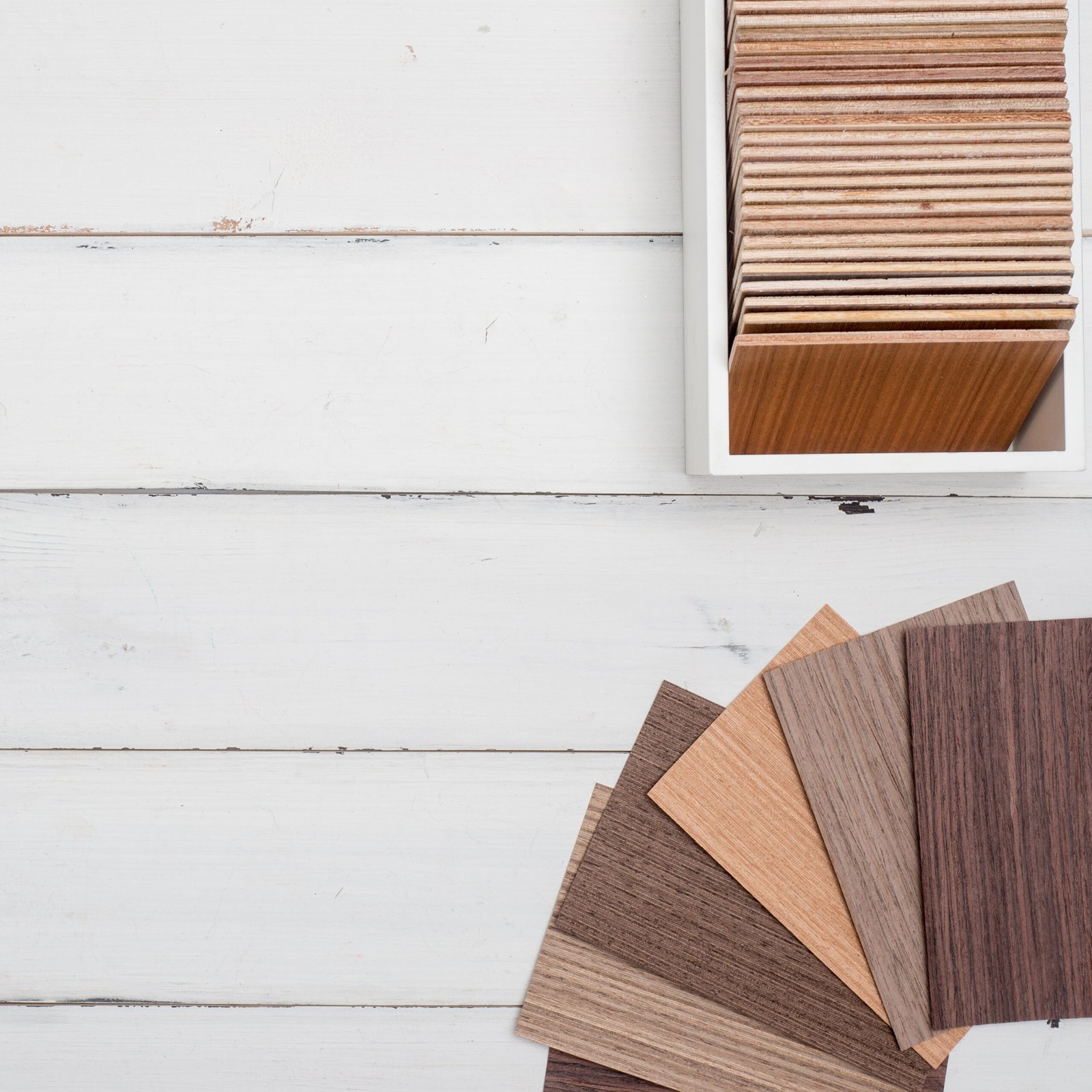
In the battle against mold formation within homes, one of the most proactive measures homeowners can take is making smart material choices during home repairs and renovations. The selection of materials that resist moisture absorption and mold growth can significantly decrease the likelihood of mold problems developing in the future, providing a long-term solution to maintaining a healthier indoor environment. This section delves into the importance of selecting mold-resistant materials and provides guidance on what materials to choose for various home improvement projects.
When renovating or repairing your home, it’s essential to consider how susceptible to mold the materials you’re using are. Traditional building materials like standard drywall, wood, and certain types of insulation are prone to absorbing moisture, which can create ideal conditions for mold growth if exposed to water or high humidity. Fortunately, advancements in building materials have led to the development of products specifically designed to resist moisture and inhibit mold growth.
For areas prone to moisture exposure, such as bathrooms, kitchens, basements, and laundry rooms, consider using mold-resistant drywall or wallboard. Unlike traditional drywall, mold-resistant varieties are made with fiberglass facings instead of paper and have a core that is less hospitable to mold and moisture. This makes them an excellent choice for high-humidity areas and for places where walls are likely to come into contact with water.
Similarly, when it comes to insulation, opting for mold-resistant options is crucial. Foam insulation, for example, is less absorbent than fiberglass or cellulose insulation, making it a better choice for preventing mold growth. In addition to its mold-resistant properties, foam insulation also offers excellent thermal resistance, making it a smart choice for energy efficiency.
Flooring choices can also impact mold growth in your home. Instead of carpeting, which can trap moisture and become a breeding ground for mold, consider hard flooring options like tile, laminate, or vinyl. These materials are less likely to harbor mold spores and are easier to clean and dry in the event of water exposure.
For framing and structural materials, treated wood products that are resistant to water and mold can offer added protection in areas where moisture might be a concern. Additionally, using sealants and paints designed to resist mold can provide an extra layer of defense when applied to susceptible surfaces.
When selecting materials for outdoor use, such as for decks or exterior siding, look for products treated to resist moisture and mold. Composite decking materials, for example, offer superior resistance to moisture, mold, and decay compared to traditional wood decking.
Making smart material choices in home repairs and renovations is not just about aesthetics or functionality; it’s a critical component of a comprehensive strategy to prevent mold formation. By opting for materials designed to withstand moisture and inhibit mold growth, homeowners can significantly reduce the risk of mold issues, ensuring their homes remain healthy and comfortable for years to come.
Why Bio On is Your Go-To Solution for Mold Formation
Bio-On stands as your definitive solution for mold challenges, offering a comprehensive suite of services tailored to address and eradicate mold from its roots. Our expertise spans mold remediation, deep cleaning, and preventive measures, ensuring not just temporary relief but long-lasting solutions. With a team of seasoned professionals equipped with state-of-the-art technology, we delve deep into the problem, identifying the source of mold formation and employing targeted strategies to eliminate it.
Our services don’t stop at remediation; we also focus on educating homeowners on preventive practices, providing them with the knowledge to maintain a mold-free environment. Choose Bio-On for a mold solution that prioritizes your health, safety, and peace of mind. Click the consultation button at the bottom right for a free 24/7 consultation with our team, taking the first step towards a cleaner, healthier home.
Conclusion
In conclusion, effectively combating mold formation in your home hinges on implementing the right strategies: proper ventilation, controlling humidity, preventing leaks, regular cleaning and inspections, and choosing smart materials for repairs and renovations. These measures collectively serve as a robust defense, safeguarding your living environment against mold. However, should you find yourself facing mold challenges, Bio-On is here to assist. Our expert team is ready to provide comprehensive mold remediation services and valuable advice on maintaining a mold-free environment. Don’t hesitate to reach out; contact the Bio-On team through the Whatsapp button for a free consultation. Let us help you ensure your home remains healthy, clean, and mold-free.








